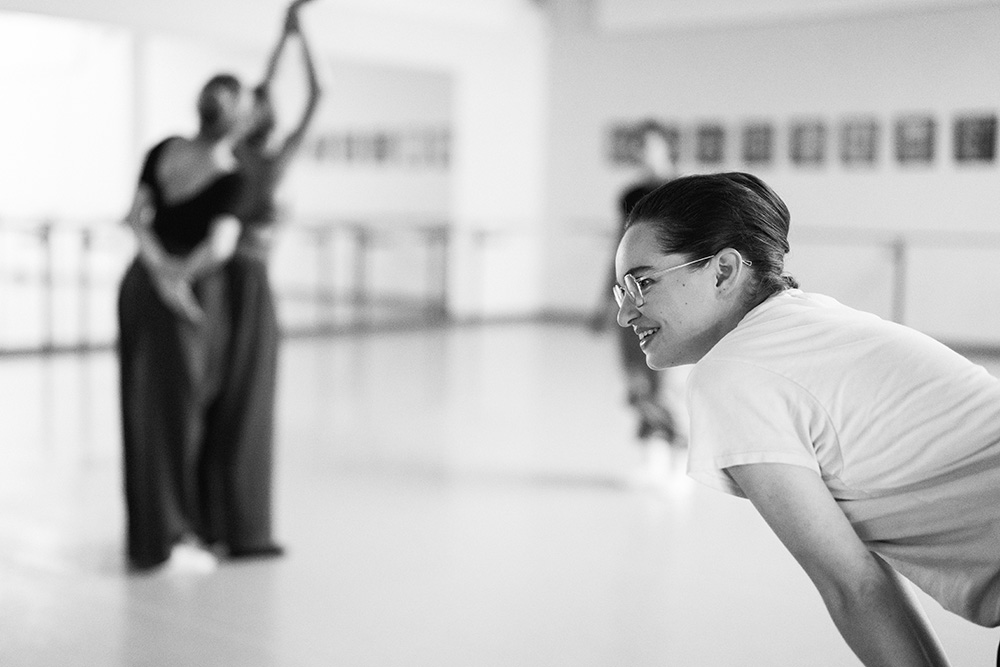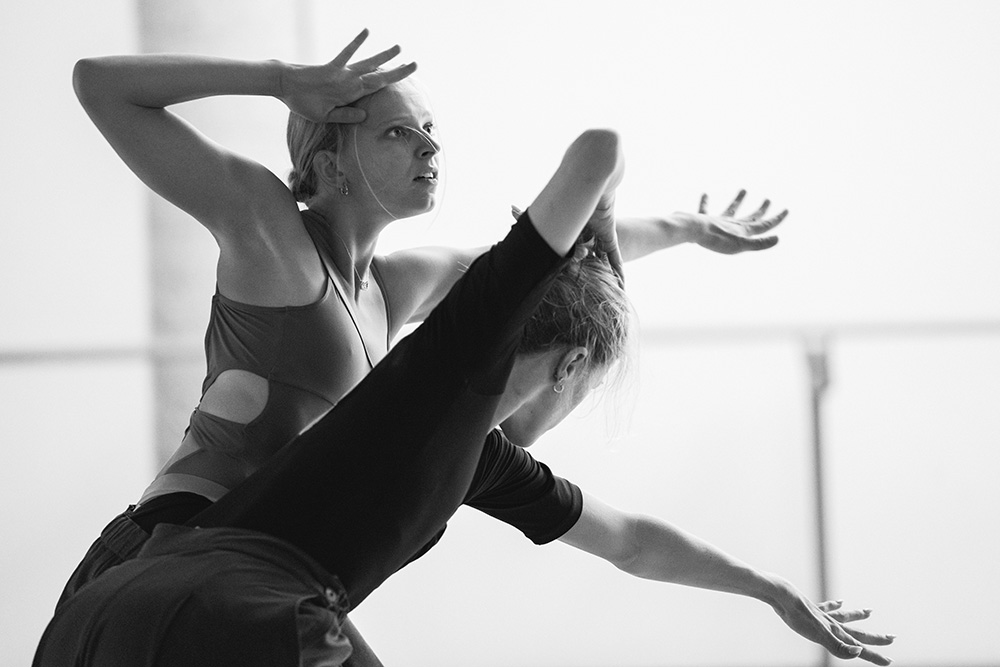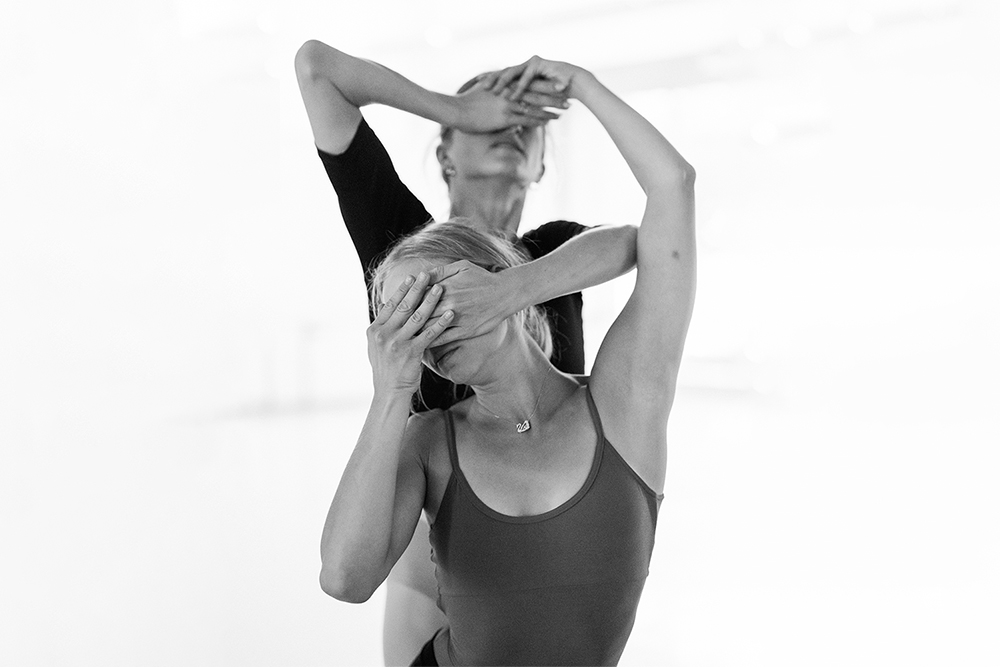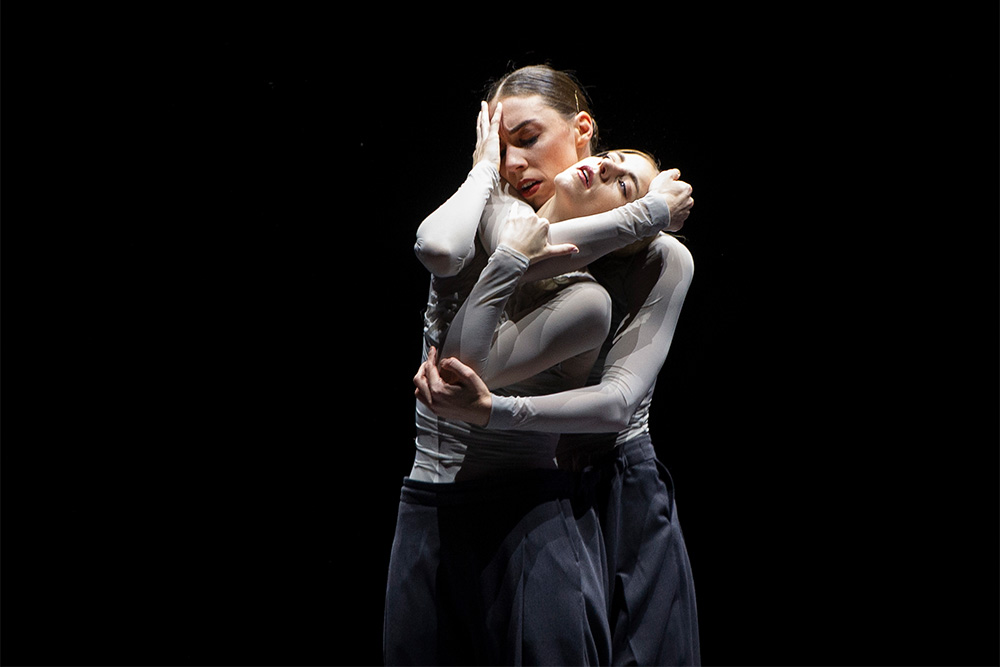Canada’s Emma Portner Presents Critically Acclaimed Duet
by Caroline Dickie
February 15, 2024

Emma Portner in rehearsal for islands. Photo by Karolina Kuras.
“More Emma Portner, please!” Such was the sentiment in Europe when Emma Portner presented islands at the Dialogues dance festival in 2021, a selection of contemporary duets from six leading international choreographers. Created for Norwegian National Ballet in 2020 and set to an electronic score, islands turns a spotlight on the fresh movement language and emotional honesty that have propelled Portner’s dizzying success. This March, islands makes its highly anticipated North American debut as part of The National Ballet of Canada’s Winter Triple Bill.
Portner’s accomplishments began early. Before the age of 25, she had created and starred in Justin Bieber’s viral video, “Life is Worth Living,” collaborated on his Purpose World Tour and become the youngest woman in history to choreograph a West End musical, Bat Out of Hell. Her long list of partnerships encompasses commercial entities like Apple and Netflix, musicians Blood Orange and Maggie Rogers, and established arts organizations from the Guggenheim Museum to New York City Ballet. She also has a significant online following performing and directing original work. With the National Ballet’s acquisition of islands, Portner returns to Canada where she began her dance training in her hometown of Ottawa.

Genevieve Penn Nabity and Heather Ogden in rehearsal for islands. Photo by Karolina Kuras.
“I was so happy when Emma agreed to bring islands to the National Ballet,” says Artistic Director Hope Muir. “It has been very emotional in the studio watching our artists engage with this unique and powerful work and to witness the way Emma communicates her vision is something unworldly. We are so fortunate to be able to present this work and I look forward to an exciting creative future with Emma.”
Portner’s style is a subtle yet powerful distillation of multiple dance forms into something that both defies characterization and is unmistakeably hers. She has been called a “sculptor” and “shapeshifter” who weaves a physical language that feels unexpected and somehow entirely natural, as though it had always existed. While she is a fascinating mover herself, Portner describes her choreographic process as a conversation with her dancers that teases out their physical signatures in place of her own. “I’m not interested in seeing my body replicated. I’m more interested in speaking through other bodies that can transform the story I’m trying to tell.”

Heather Ogden and Genevieve Penn Nabity in rehearsal for islands. Photo by Karolina Kuras.
Gender is a subject of interest for Portner and typically her work is unconstrained by traditional gender roles that inform the history of classical ballet. With islands, Portner subverts the physical implications of the classical tutu, whose flat structure distances one dancer from another. “What’s the opposite costuming construct to that?” Portner wondered. “It would be to bind hips together.”
From this initial observation, Portner created islands as a duet for women that would defy ballet’s gendered constructs by sending the dancers jumping, lifting and partnering one another with a physicality and intimacy rarely seen among women in classical work. As islands continues to evolve, for the National Ballet’s remount Muir asked Portner to consider working with non-female identifying artists to understand how it might affect the work.

Artists of Norwegian National Ballet in islands. Photo by Jörg Wiesner. Courtesy of Norwegian National Ballet.
“It’s a credit to Emma that she was so open to the suggestion and the result is that we are now including one combined cast of male and female artists in islands,” says Muir. “This is a first for this work and proof that art continually responds to its environment. It was important to Emma that the male energy not be intimidating or overpowering, so the duet is performed with the male dancer in front and the woman behind, reversing the positioning most common in classical partnering.”
The evolution of islands is consistent with the openness and self-questioning that Portner ascribes to her creative process and makes her work so compelling. “When I make pieces, I try to think, what have I not seen in the world and why does this piece need to exist?” she says. “What gets me every time I watch islands is this idea that maybe, step by step, we are accomplishing something new and important here.”
Don’t miss Emma Portner’s islands, onstage March 20 - 24, 2024